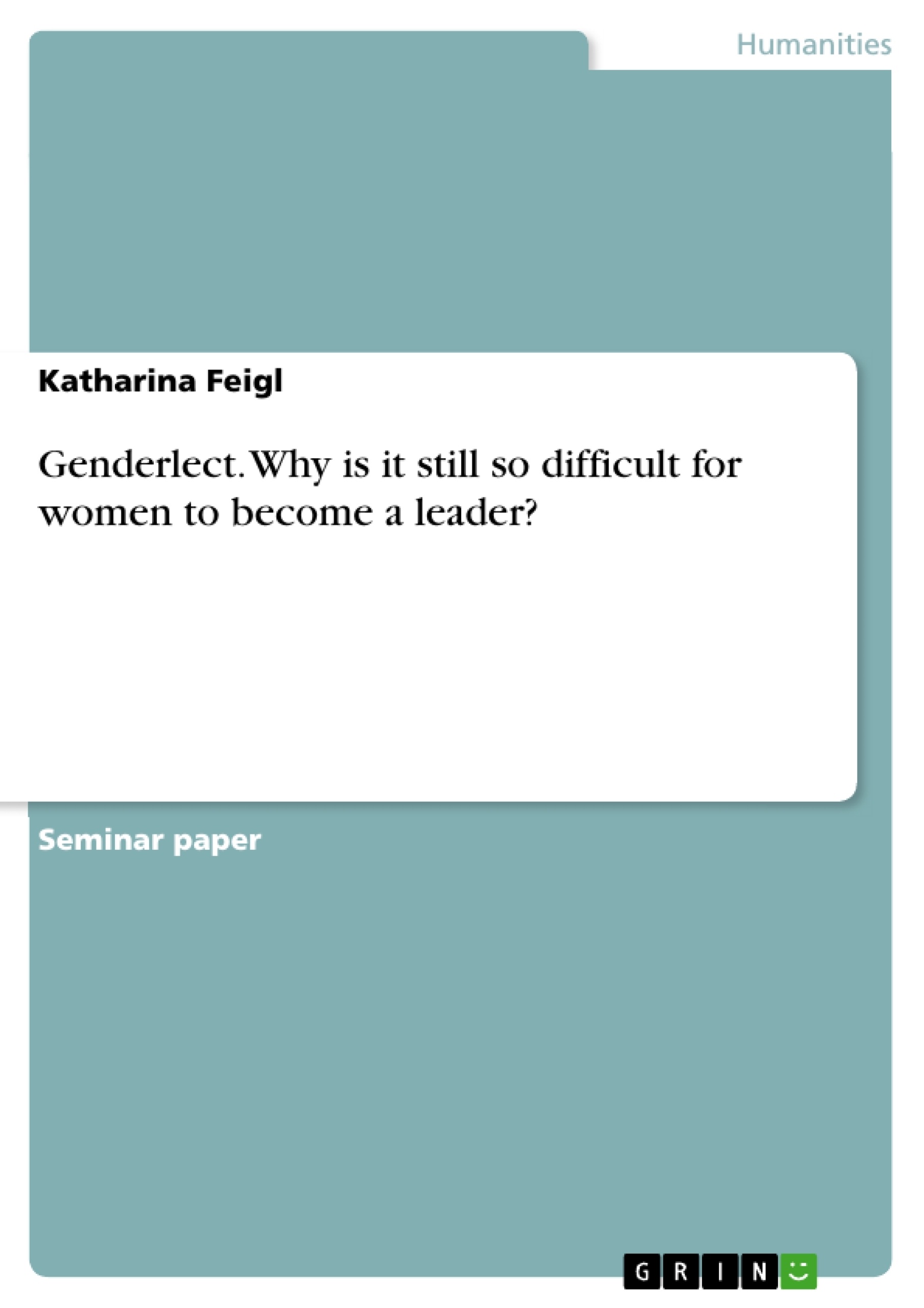In the U.S. women make up nearly 40% of MBA graduates (Noland and Moran 2016). Nevertheless, women accounted for only 20% of all S&P 500 directors in 2016 despite making up 47% of the U.S. workforce (Loop 2016). Moreover, as of 2014, nearly 60% of 22,000 global firms had no female board members, and less than 5% had a female CEO. But there were some differences between the countries examined: In Norway, Latvia, Slovenia, and Bulgaria were at least 20% of the board members and CEOs women. On the other hand, Japan just had 2% female representation in board members and 2.5% in CEOs (Noland and Moran 2016). But why is it still so difficult for women to become a leader? The concept of genderlect could give an answer, which why the various concepts and aspects will be discussed in this short paper.
Table of Contents
- Genderlect
- Two Theories about Language and Gender
- Dominance Theory
- Gender Difference Theory
- Interactional Styles for Men and Women
- Conclusion
Objectives and Key Themes
This text examines the concept of genderlect and its implications for communication and leadership. It aims to explain why women continue to face barriers in achieving leadership roles.
- Genderlect as a language variety influenced by gender
- Dominance and difference theories in language and gender
- Communication styles and interactional patterns between men and women
- The impact of gendered communication styles on leadership roles
- The need for inclusive and balanced communication styles in the workplace
Chapter Summaries
- Genderlect: This section introduces the concept of genderlect, a language variety influenced by gender. It explores the origins of the term and discusses the potential differences between male and female speech patterns.
- Two Theories about Language and Gender: This chapter examines two prominent theories regarding language and gender: the Dominance Theory and the Gender Difference Theory. It outlines the key propositions of each theory, including Lakoff's nine differences in female language and Tannen's concept of men and women belonging to different subcultures.
- Interactional Styles for Men and Women: This section presents research on the distinct interactional styles of men and women, drawing on Holmes' work to illustrate how these styles manifest in various settings.
Keywords
Key concepts explored in this text include genderlect, dominance theory, gender difference theory, communication styles, interactional styles, leadership, women in leadership, and inclusive communication.
- Quote paper
- BSc (WU) M.A. Katharina Feigl (Author), 2020, Genderlect. Why is it still so difficult for women to become a leader?, Munich, GRIN Verlag, https://www.grin.com/document/925470




